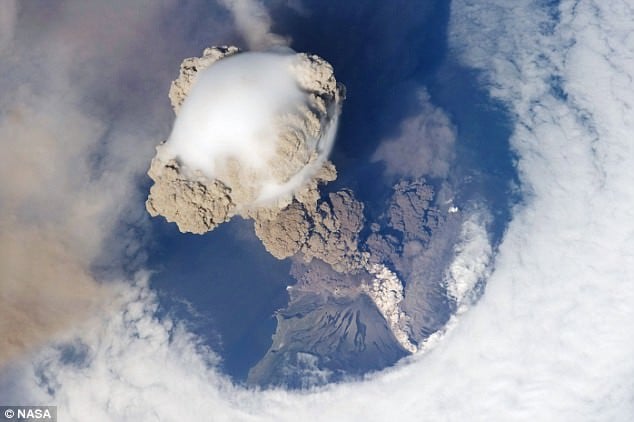[/caption] These images of Sarychev Volcano were popping up everywhere in the internet yesterday, but unfortunately I was out of intertube contact most of the day. But these images are too awesome not to share! Astronauts on board the International Space Station took these striking views of Sarychev Volcano (Kuril Islands, northeast of Japan) on June 12, 2009. Notice the shock wave around the edge of the volcano's plume and the "hole" the clouds that the eruption caused. Sarychev Peak is one of the most active volcanoes in the Kuril Island chain, and it is located on the northwestern end of Matua Island. Here are few more images taken in sequence as the ISS flew 354 km (220 miles) overhead:
[caption id="attachment_33433" align="aligncenter" width="580" caption="Second image of Sarychev Volcano. Credit: NASA"]
[/caption]
Volcanologists say these images are exciting because they capture several phenomena that occur during the earliest stages of an explosive volcanic eruption. The main column is one of a series of plumes that rose above Matua Island on June 12. The plume appears to be a combination of brown ash and white steam. The vigorously rising plume gives the steam a bubble-like appearance. The eruption cleared a circle in the cloud deck. The clearing may result from the shockwave from the eruption or from sinking air around the eruption plume: as the plume rises, air flows down around the sides like water flowing off the back of a surfacing dolphin. As air sinks, it tends to warm and expand; clouds in the air evaporate.
Also visible is material from the eruption falling down the slopes of the volcano.
[caption id="attachment_33434" align="aligncenter" width="523" caption="Third image of the volcano. Credit: NASA"]
[/caption]
These images were taken by the Expedition 20 crew on the ISS, using a Nikon D2XS digital camera fitted with a 400 mm lens, and is provided by the ISS Crew Earth Observations experiment and Image Science & Analysis Laboratory, Johnson Space Center.
Source:
NASA Earth Observatory
 Universe Today
Universe Today
